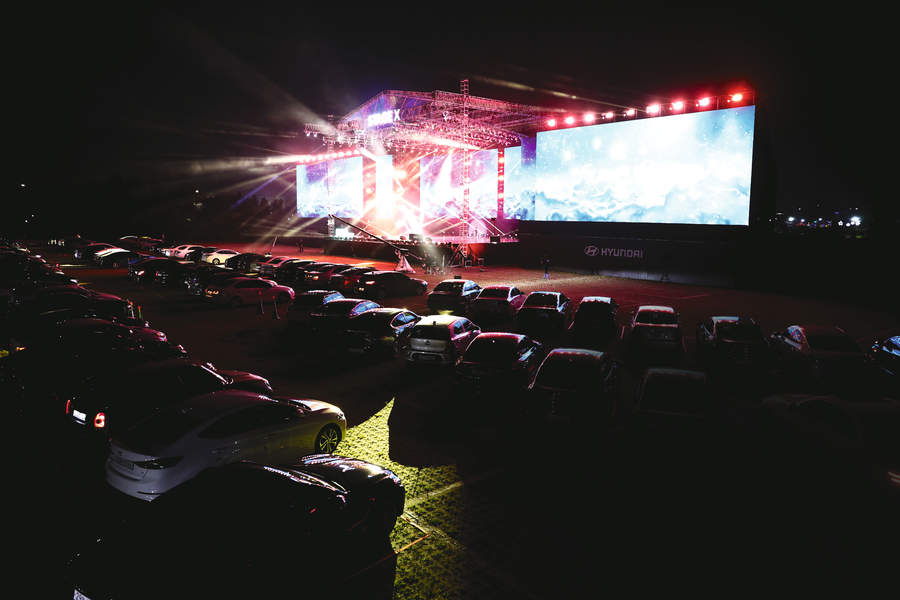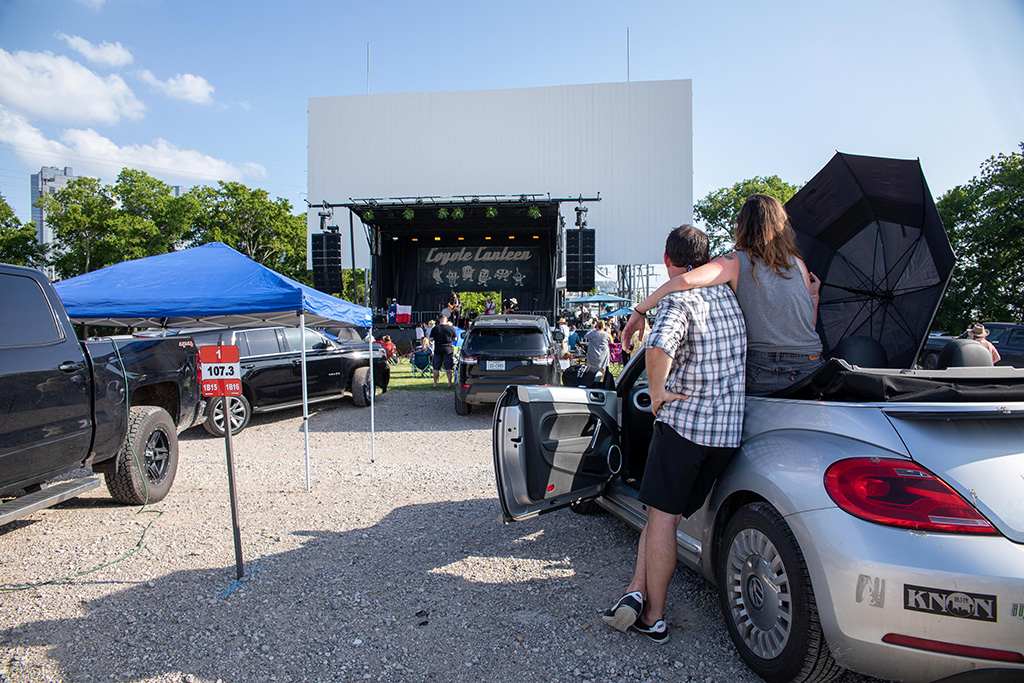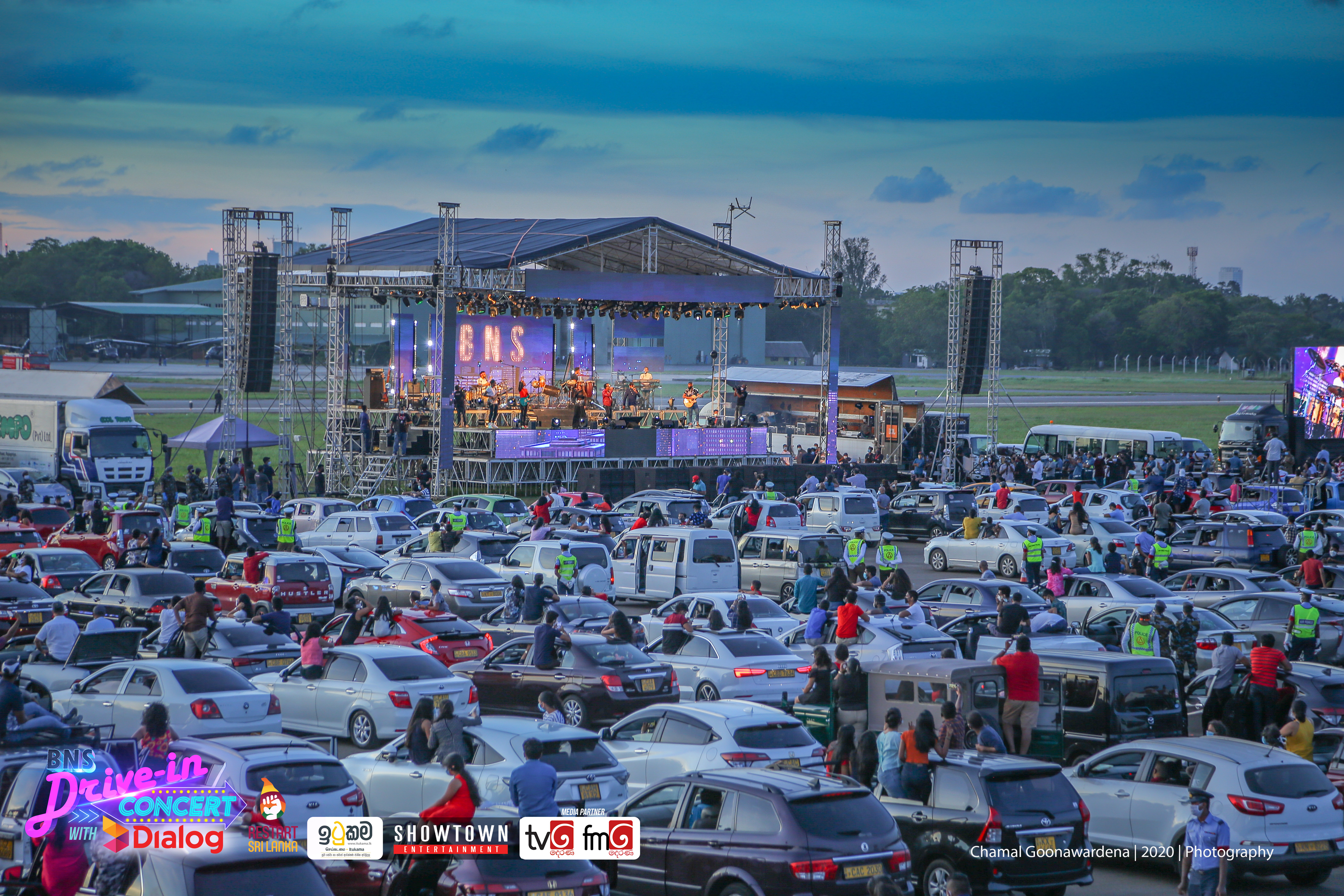At the Drive-In
Drive-In Concerts Offer Stability for the Live Sound Industry During the COVID-19 Pandemic

The Chinese zodiac says 2020 is the Year of the Rat, marking the beginning of the 12-year astrological cycle. Despite the diseases its rodent namesake is blamed for spreading to humankind over the centuries, the Year of the Rat portends a period of wealth and surplus.
On Jan. 25, 2020, the Chinese New Year, the world was indeed on the cusp of a new beginning. But no one could have known how wrong the zodiac’s prediction would be.
Like industries and economies around the world, the $28 billion global live music business was just waking up to the grim realities of a global pandemic in the early months of this year. Live concerts, hampered by social distancing policies designed to curb the spread of COVID-19, were among the first “non-essential” businesses to close. By mid-March, summertime anchor events like SXSW, Coachella, and the New Orleans Jazz and Heritage Festival were all cancelled.
Instead of racking up record-breaking box office returns in 2020, the live music industry is losing billions. Optimistic agents look for the touring business to return in mid-2021 at the earliest. And interim experiments using social distancing practices at indoor live music venues have remained just that—experiments.
Related: Staying Engaged in a Contactless World

One model is showing promise, though, at least in the interim. Drive-in concerts have emerged as a way to satisfy music fans’ appetite for the live experience while the industry searches for ways to stay afloat during the pandemic.
On May 14, country star Keith Urban played a stripped-down set for first responders and front-line workers from the Vanderbilt University Medical Center at the Starlite Drive-In, 40 miles east of Nashville. Sound Image Nashville produced audio for a reduced-capacity parking lot of 125 vehicles with an L-Acoustics K2 line array ground stack on a flatbed trailer on which Urban performed.
A daily selection of the top stories for AV integrators, resellers and consultants. Sign up below.
Anticipating some concertgoers might want to stay in their air conditioned cars, the audio team arranged for a slightly delayed local FM signal so attendees could listen inside their vehicles instead of standing in the designated socially distanced spots.
“Probably the biggest challenge was delaying the FM transmitter to the P.A., because it was kind of a windy day,” said Chris Demonbreun of Sound Image. “We pulled a car into a space and sat [there while] the front-of-house guy made adjustments until we found a happy place. But the wind would blow the high end away. Luckily, when the sun went down and the show started, the wind was pretty calm.”
Related: Digital Signage's Role in Flattening the COVID-19 Curve

Onstage Systems of Dallas worked a similar parking lot event at Fort Worth’s Coyote Drive-In. In a space designed to hold up to 500 vehicles, organizers allowed 250 to park for a lineup of country artists that included Nikki Lane and Paul Cauthen.
“The weather was decent and people hadn’t been to a concert in six months,” said Tyler Johnson of Onstage Systems. “Almost everybody sat out in lawn chairs or in the beds of their trucks.”
The system wasn’t much different from the L-Acoustics K2 rig Onstage Systems would bring to a typical medium-sized festival, Johnson noted. The difference was the FM transmitter they used to provide audio to the vehicles.
“It was one stereo feed, and we had to pick just one time delay, which was kind of problematic because FM has no time propagation and the P.A., of course, does,” Johnson said. “We picked a sweet spot about halfway back through the audience, [but] almost everybody ended up just listening to the P.A. rather than being stuck inside their cars.”
Related: Reopening Live Music Right, Right Now
Despite setting up for a typical festival gig, the Onstage Systems team learned that in this setting, more is better. They raised the stage to six feet instead of the usual four, and discovered that more lights and more P.A. would improve the experience.
“When you’re playing to such a large area, everything has to be big,” Johnson added. “We met that [need] with the P.A. and with the stage, but everything that you would normally do when your audience is packed from zero to 150 feet out, you have to amplify that. We’re finding that it’s really just having to amplify for a larger, more spread-out audience.”
The Tupelo Music Hall in Derry, NH, had a similar idea—to produce and promote socially distanced concerts in a drive-in configuration with a supplemental audio feed over FM radio—but Scott Tkachuk of UltraSound added a twist for the 75-vehicle lot.
To minimize obstructions blocking the audience’s view of the stage, Tkachuk mixed sound for the eight Meyer Sound Leopard compact linear line array boxes on a Midas PRO2 console from the lobby of the venue, located just behind the stage. For reference audio in the isolated location, he used Meyer Sound Amie loudspeakers.
“I get the mix going and walk with my iPad around the parking lot, and [make] a few minor tweaks on the first couple of songs,” said Tkachuk. “Once you get the vibe of what’s going on, you compensate a little for it, and it’s pretty darn spot on.”
Not only are the crew and equipment not baking in the parking lot or blocking sight lines, they can keep front of house set up all the time in an air-conditioned environment.
Related: Billy Strings' Drive-In Tour Rolls On
“You’re mixing for live, but you’re also mixing for the live stream and FM, so it makes sense to be in that controlled environment,” he added.

Other sound companies and promoters are also testing the viability of drive-in concerts. Live Nation’s three-city Live from the Drive-In tour featuring Brad Paisley, Nelly, and Darius Rucker performed to fans in St. Louis, Indianapolis, and Nashville while also streaming online, an option events like the Newport Folk Festival have tried in lieu of holding actual concerts this summer. Still, the financial bottom line is the big question.
“I think it’s possible to make money,” said Demonbreun. “With the drive-in thing, you’re kind of forced to scale back production, which saves a lot of costs.”
While Johnson sees potential in the drive-in model, there are plenty of variables at play. “The production costs are problematic when you’re limited to X number of parking spaces,” Johnson countered. “It’s also hard to make plans when the COVID numbers are rising and falling, the governor’s orders are changing every other week, and the mayor’s orders are changing every other week.”
In the short term, though, the popularity of drive-in concerts is undeniable.
“I hope this doesn’t become the norm, because I really miss [mixing for] 18,000 to 20,000 people in an arena,” said Demonbreun.
“At the end of the day, we all have to be super safe because it’s all about the artist’s safety—and it’s all about the crowd’s safety, because without the crowd we have nothing. I think the car thing could work for a little while, but I don’t think it’s the future.”
Jim Beaugez is a freelance writer and content creator for the AV, professional audio, and music industries. His work has been published by Systems Contractor News, Pro Sound News, Mix, Radio World, and The Recording Academy, as well as Rolling Stone, Smithsonian, Guitar World, Guitar Player, and other consumer publications. He previously worked in communications for the pro audio and musical instruments industries.
